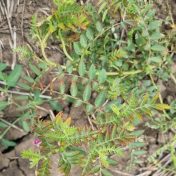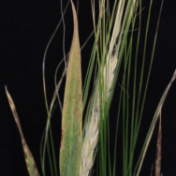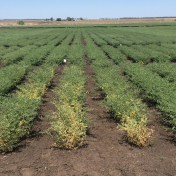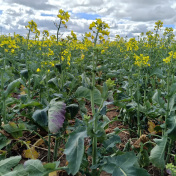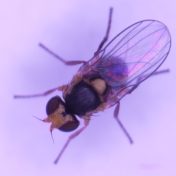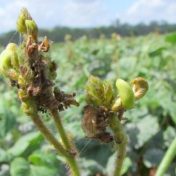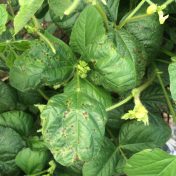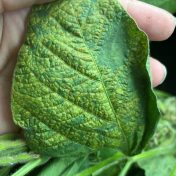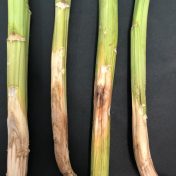A recent survey of chickpea fields across the Darling Downs, including areas around Dalby, Cecil Plains, and Chinchilla, has revealed the presence of several viruses affecting chickpea crops. Among the viruses detected were alfalfa mosaic virus (AMV), phasey bean mild yellows virus (PBMYV), turnip yellows virus (TuYV), and bean leaf roll virus (BLRV). Alfalfa mosaic virus (AMV) AMV was the… Read more »
A recent survey of six fields across the Darling Downs and northern New South Wales has confirmed the presence of BVG (in all six fields), with varying levels of infection. The fields surveyed were spread across key cropping areas, including regions around Goondiwindi, Tara, and greater Dalby. This widespread detection highlights the need to remain vigilant and monitor crops closely…. Read more »
Chickpea growers need to stay vigilant for fungal diseases, especially as crop canopies close and wet weather and heavy dews occur. Recent reports from central Queensland have highlighted cases of white mould caused by Sclerotinia spp. Meanwhile, wet conditions in southern Queensland have led to instances of phytophthora root rot in susceptible paddocks. Across all regions, growers should also monitor… Read more »
More growers are planting canola in southern Queensland this season, so it’s important to be on the lookout for turnip yellows virus (TuYV) – one of the main viral threats to canola. What is TuYV and why does it matter? TuYV is a persistent virus that affects canola and other brassica crops. It is transmitted by green peach aphids (GPA,… Read more »
As we approach the end of the mungbean season in southern Queensland, there have been several reports of pest fly infestations in mungbean crops, including bean fly (Ophiomyia phaseoli) attacking later stage crops, along with infestations of the relatively recent invader the American serpentine leaf miner (Liriomyza trifolii). Late bean fly infestations Late bean fly damage was recently observed in… Read more »
QDPI entomologists have received several recent reports of poor control after spraying bean podborer (Maruca vitrata) in Central Queensland mungbean crops. A major pest of mungbeans in tropical and subtropical production areas, bean podborer is typically more problematic in coastal cropping regions and can be more difficult to manage than co-occurring Helicoverpa sp. populations. Infestation pattern and nature of damage… Read more »
Powdery mildew is a fungal disease that is commonly seen each cropping season in most mungbean paddocks in Australia. In Queensland and northern New South Wales, disease outbreaks usually occur from early autumn in the summer planted crops, with epidemics typically developing as soon as temperatures drop. Initial symptoms are easy to recognise: small whitish, powdery spots on the upper… Read more »
A wet spring has led to outbreaks of halo blight in several spring-planted mungbean crops throughout southern Queensland. Tan spot has also been detected in some crops. Avoid replanting seed from crops affected with halo blight and tan spot and minimise the spread of these diseases by restricting access and ensuring good farm hygiene. Avoid movement through infected paddocks and… Read more »
Earlier this year, the Queensland Department of Primary industry (DPI) pathology team received samples of soybean with virus-like symptoms. Diseased plants displaying strong chlorotic mottle on leaves and leaf crinkling (see images below) were scattered through the crop. While the samples tested positive in a polymerase chain reaction (PCR) test for potyvirus, the actual species remained a mystery. Subsequent sequencing… Read more »
Recent weather conditions have led to isolated outbreaks of two fungal diseases, fusarium crown rot and sclerotinia stem rot, in several grain crops across southern Queensland. Crown rot Crown rot, primarily caused by Fusarium pseudograminearum, has been detected in several barley crops across southern Queensland, but other winter cereal crops and regions are also at risk. Initial disease symptoms include… Read more »
